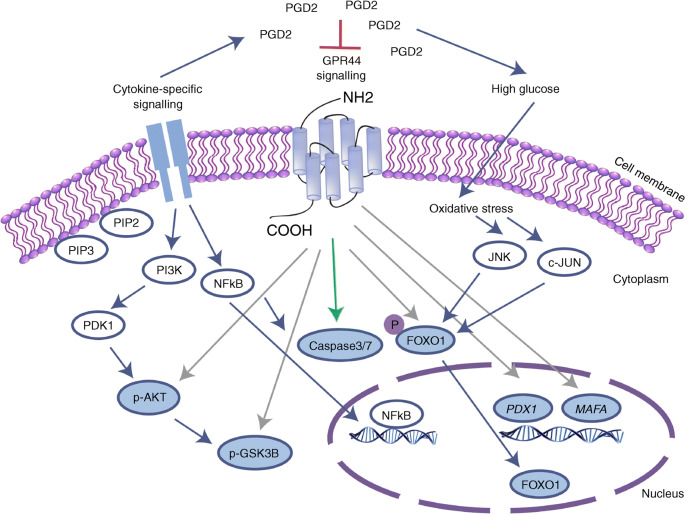Fig. 6.
Schematic overview of the PGD2–GPR44 axis in human islets exposed to hyperglycaemia and proinflammatory cytokines. HG and presence of proinflammatory cytokines increases the level of PGD2 in the vicinity of islets [8, 9]. PGD2 signals through GPR44 and induces apoptosis in human islets via increase in caspase 3/7 activity (green arrow). Inhibition of the PGD2–GPR44 axis improves human islet viability and function via increased activation of the Akt–GSK3β signalling pathway. Inhibition of GPR44 during stress responses restores phosphorylation of FOXO1 and upregulates the expression of beta cell transcription factors, PDX-1 and MafA (grey arrows). It has been suggested that unphosphorylated FOXO1 translocates to the nucleus where it binds to PDX-1 gene and downregulates its transcription [37, 39]. Therefore, increased phosphorylation of FOXO1 could, at least partly, be involved in the upregulation of key beta cell transcription factors

